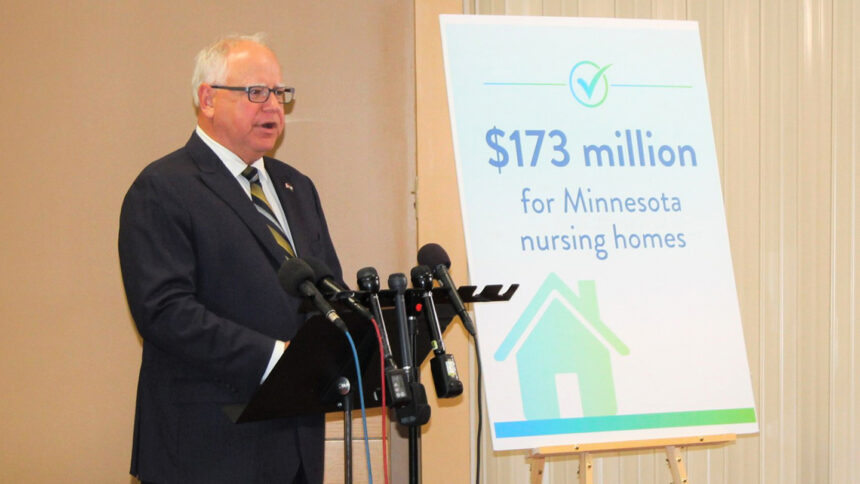
A skilled nursing provider whose facility was the site of a victory tour Tuesday for Minnesota Gov. Tim Walz used the opportunity to ask for continued support for the sector and a permanent change to the state’s outdated reimbursement system.
Walz (pictured), leader of the state’s Democratic-Farmer-Labor party, helped shape a last minute budget deal that secured several additional funding lines for the state’s nursing homes, which have closed in significant numbers over the last three years and remain unable to meet hospital demand in many places.
The $300 million nursing home package included $173 million in direct funding that can be used to address debt or infrastructure needs. It’s already being awarded. In addition, a 4% Medicaid rate increase can be used more broadly, likely toward wages as local nursing homes try to catch up with competing employers.
“Thank you for recognizing the challenges that COVID has put on the senior population in this state,” Steve Chies, president of North Cities Health Care, told the governor as he visited the company’s Park River Estates Care Center Tuesday. “We compressed 10 years of employee turnover into three years. And so now what we could have dealt with over a 10-year period of time with people retiring…(instead) people said, ‘I’m done. I’m going to retire at this point in time.’”
While Chies embraced a $75 million grant program that can help some facilities focus on recruiting and retention, he noted that caveats around some other pots of money in the funding deal could make it hard for operators to dip into them. For-profit providers, for instance, must pay tax on the direct funding being doled out now. A loan program for failing facilities, he added, requires a pay off target that cash-strapped providers may not be able to hit quickly or at all, with still-climbing costs.
A better long-term fix, Chies emphasized to the governor, would be an overhaul of the reimbursement model that dictates daily rates for Medicaid patients. The same system also dictates rates for private pay patients in Minnesota.
“I told the governor, ‘You made a good-faith effort. But your payment system is 25 years old. The care and services we provide to patients has completely changed over the last 25 years,” Chies told McKnight’s Long-Term Care News Wednesday. “You have to have a system that is much more attuned to the market drivers that are out there.”
As in many other states, the cost-reporting system in Minnesota lags 18-24 months behind actual expenses. During COVID, the flaw of those delays made itself abundantly clear. It has changed the way lawmakers view the sector and its importance as a legislative priority.
Chies, who recounted his own childhood experiences with a Teamster-Democrat dad, said concerns about rural access and job losses when facilities close have brought Republicans around to the providers’ cause.
“If you told me 5 years ago that the Republicans would be leading the charge … I would have told you you’re crazy,” Chies said. “The situation changed because of COVID and the rural closures.”
Local media reported that Walz, during his tour of Park River, said additional funding for nursing homes wasn’t in doubt last session, but it wasn’t secured until the 11th hour because of differing opinions on how to distribute it.
Regardless of party, Chies said it’s critical that providers build relationships with their elected officials and get them into their buildings. In Park River, the differences between a 1983 building and a 2011 building were on clear display. And that gave Chies an opening to bring up the infrastructure the challenge the sector is facing.



